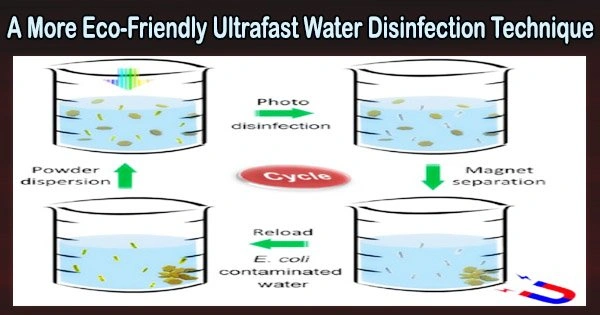Public health depends on having access to clean drinking water, but conventional disinfection techniques have their own negative environmental effects. In centralized water systems, chlorine is inexpensive and simple to use, but it produces dangerous chemical byproducts.
Researchers at the Georgia Institute of Technology have developed a technique for disinfecting water with brief electric shocks that uses less energy, costs less, and has less of an impact on the environment. The technology might run off batteries or even be connected to the electrical grid.
“This is a pretty new disinfection technology, and we want to demonstrate in the small scale first, and then improve its real-world applications for point-of-use or off-grid water purification,” said Xing Xie, the Carlton S. Wilder Assistant Professor in the School of Civil and Environmental Engineering.
Xie and his postdoctoral researcher Ting Wang published the paper, “Nanosecond Bacteria Inactivation Realized by Locally Enhanced Electric Field Treatment,” in Nature Water in January.
Localizing Electricity
Although conventional electric field treatment (CEFT) is used to pasteurize food, it hasn’t been generally adopted to disinfect drinking water due to the expense. The bacterium’s cell membrane behaves like a capacitor in a circuit when water and bacteria are subjected to electricity.
This ultra-fast bacteria inactivation just using the nanosecond pulses is a surprise because, theoretically, nanosecond pulses are just too short to kill the bacteria in conventional electric field treatment because the membrane takes time to charge. But with LEEFT’s nanowedges and nanostructures, the bacteria cells can be charged directly by the nanometal, quickly disinfecting water.
Ting Wang
Typically, in CEFT, water’s low conductivity means nanosecond pulses won’t charge the membrane fast enough to kill bacteria.
The power was delivered to the bacteria using the researchers’ locally enhanced electric field (LEEFT). The electrodes have gold nanotips that, when exposed to electricity, instantaneously build up concentrated charges, allowing the charges to move to the membrane and kill the bacteria much more quickly.
“This ultra-fast bacteria inactivation just using the nanosecond pulses is a surprise because, theoretically, nanosecond pulses are just too short to kill the bacteria in conventional electric field treatment because the membrane takes time to charge,” Wang said. “But with LEEFT’s nanowedges and nanostructures, the bacteria cells can be charged directly by the nanometal, quickly disinfecting water.”
Electric Innovation
They created gold nanowedges on a chip’s electrode edge to test the technology. Then they put Staphylococcus, a model microbe that is frequently used in lab settings and is also frequently present in water systems, to the chip. After that, they used electric pulses and saw through a microscope how the bacteria responded in real time.
95% of the nanowedges killed the bacteria when they were exposed to 200 nanoseconds of 40 kilovolts per centimeter of electricity. LEEFT reduces the applied eclectic field strength by eight times and reduces treatment time by one million times as compared to standard EFT.
“We found that even nanosecond pulses could kill the bacteria in the LEEFT and not other circumstances,” Wang said.
This almost instantaneous decontamination lowers the amount of electricity required to disinfect water, making this a cost-effective sanitation option and pointing to a future in which providing clean water may not have such a negative impact on the environment.
















